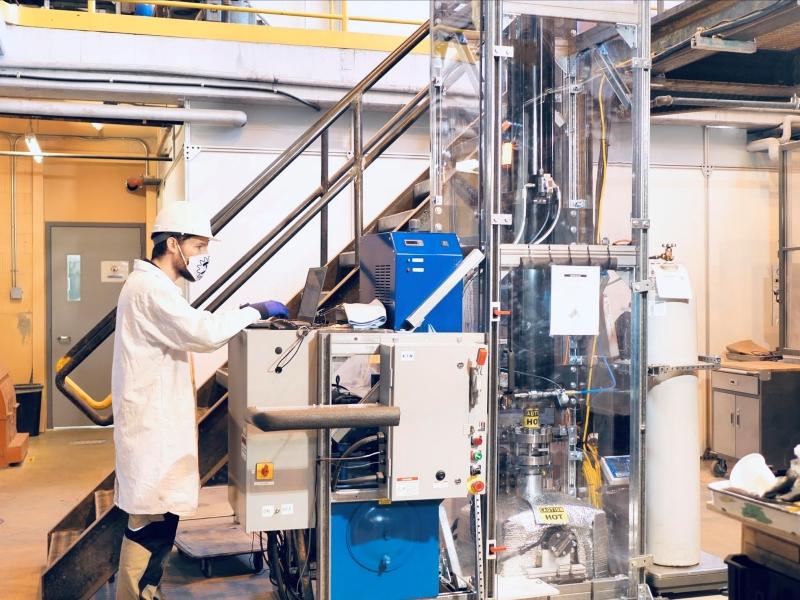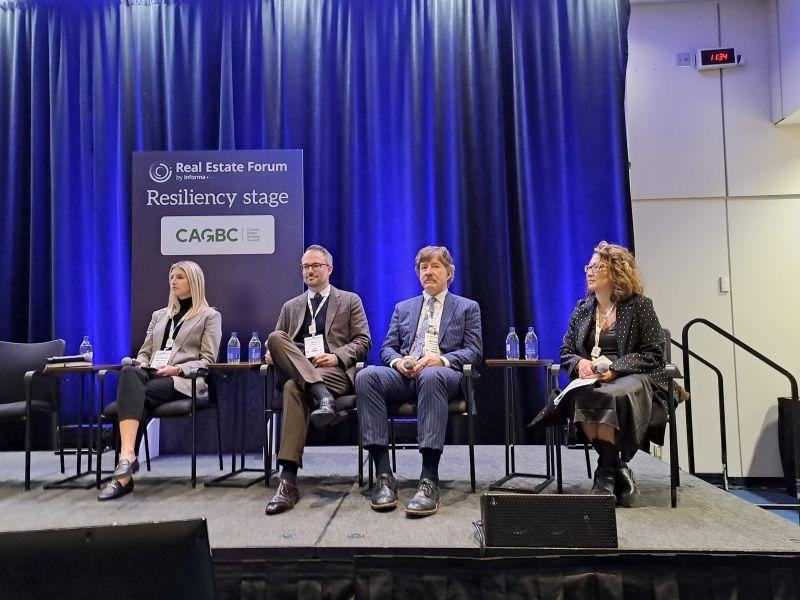There are almost 100 Green Building Councils around the globe, and the leaders of four of them spoke on June 7 at the Canada Green Building Council’s “Building Lasting Change 2016” conference.
 “The World Green Building Council gives us a great global platform to talk about how to advance green buildings around the globe and in our respective countries,” said Canada Green Building Council president and chief executive officer Thomas Mueller, who moderated a panel featuring representatives from Australia, Germany and India.
“The World Green Building Council gives us a great global platform to talk about how to advance green buildings around the globe and in our respective countries,” said Canada Green Building Council president and chief executive officer Thomas Mueller, who moderated a panel featuring representatives from Australia, Germany and India.
Green Building Council of Australia
Green Building Council of Australia (GBCA) chief executive officer Romily Madew said her organization ranks with Canada as the second biggest of its type behind the U.S. Green Building Council. It works with local, state and federal governments and has strong influence and engagement with the Australian real estate industry, in which 45 per cent of investors are from overseas.
Madew familiarized attendees of the session at Toronto’s Allstream Centre on her country’s Green Star building rating system, which was developed in 2002 and has been used to certify more than 1,070 projects. Thirty per cent of Australia’s central business district office space is Green Star-certified and half of the top 50 companies on the Australian Securities Exchange use Green Star.
The GBCA has an agreement with the International WELL Building Institute that creates a path to achieve both a Green Star and WELL certification without having to duplicate measures. It also works closely with several other international green certification bodies to make it easier for members to achieve multiple certifications.
“Green building continues to double every three years, so the pressure is really on Australian companies to evolve and remain at the forefront of sustainability,” said Madew.
The GBCA is dedicating more attention to increasing the number of buildings that don’t produce carbon emissions or even generate more renewable energy than they consume. It’s also working with more than 50 organizations in Australia on a Living Cities Alliance, a new platform to develop a national green infrastructure policy.
“It’s about addressing climate change, boosting biodiversity, enhancing public domain, improving water management practices and building healthier and more resilient cities,” said Madew.
“We need to push our industry and need to be transformative in our thinking and look beyond buildings. We are listening to what our members are telling us and taking a much more broad approach to sustainability.”
German Sustainable Building Council
The German Sustainable Building Council (DGNB) was formed in 2007 and has been led by chief executive officer Christine Lemaitre for six years. She said that the European Union is highly regulated and, because of that, it took Germany a while to come around to thinking that it needed a sustainability rating tool and certification system. It has since developed a rating tool also known as DGNB.
The council now has 40 employees in its Stuttgart headquarters and 1,300 member organizations. It has issued more than 1,000 DGNB certifications in Germany, Austria, Switzerland and Denmark, while Barcelona, Spain and Ulaanbaatar, Mongolia are using DGNB as a district-planning tool.
Lemaitre said the DGNB wants to “make sustainability mainstream” and that its goal is to “design, build and operate the built environment in a way that meets the needs of the present without compromising the ability of future generations to meet their own needs.”
Germany isn’t looking at incorporating the WELL standard because much of it’s already covered in its existing certification system. However, the DGNB wants to incorporate resiliency to climate change and risk assessment more comprehensively into its rating system while trying to find a balance between lower construction costs and sustainability.
“Sustainability is not only about doing the right thing for the people and being environmentally friendly, it also has to make sense on the economic side,” said Lemaitre.
“What we implemented were life cycle cost calculations that have a very high impact on the result of our certification. A Platinum DGNB building will normally be less expensive over the life cycle than a Silver-certified one.”
There’s also a need to formulate common strategic goals for existing building stock of all types and to address the interactions of buildings within their neighbourhoods, according to Lemaitre.
“There’s still a lot of space for innovation. Regulation will not save us. I think we have to be critical about it and have to think holistically about the topic and try to move in the right direction.”
Indian Green Building Council
The Indian Green Building Council (IGBC) formed in 2001 and executive director Sundaresan Raghupathy pointed out that its 20,000-square-foot headquarters in Hyderabad was the first LEED Platinum-certified building outside of the United States in 2003 and was the world’s greenest building for two years.
There are 20 local chapters of the IGBC around India and the goal is to have 40 by the end of 2017. The IGBC now has 13 of its own rating programs, including one covering metro stations, and more are in the pipeline.
“You name any type of building and we have a rating for it, and it’s absolutely fine-tuned for local conditions,” said Raghupathy.
There are 3,657 green building projects in India, and a project can include several buildings. Raghupathy estimated that there are more than 100,000 green buildings covering 3.82 billion square feet, giving India the second largest footprint in the world. Green homes account for 40 per cent of that total.
“Green homes are fantastic in terms of economics,” said Raghupathy, noting that the typical payback for green initiatives in housing takes less than a year.
Construction costs for affordable green housing in India average between $17 and $22 per square foot by using monolithic construction where concrete walls, slabs, staircases and sunshades are cast on site floor-by-floor, which reduces expenses for materials, transportation and labour. Such buildings absorb more heat so they can’t obtain IGBC Gold or Platinum certifications, but they can achieve Silver.
Prefabricated green homes that can be built in 17 days and come Platinum-certified cost $27 per square foot.
Raghupathy said Mumbai’s slums have become a model for the world through green building projects involving the government, the development industry and the green building community that will take another five years to complete. Developers are incentivized to replace low-rise buildings with more environmentally friendly taller structures that open up land that can be sold privately.
“It’s a win-win situation for the people, the government and the developers, and we end up with beautiful green homes,” said Raghupathy. “This is how the country is evolving.”
Raghupathy believes India will have 10 billion square feet of green buildings by 2022.







